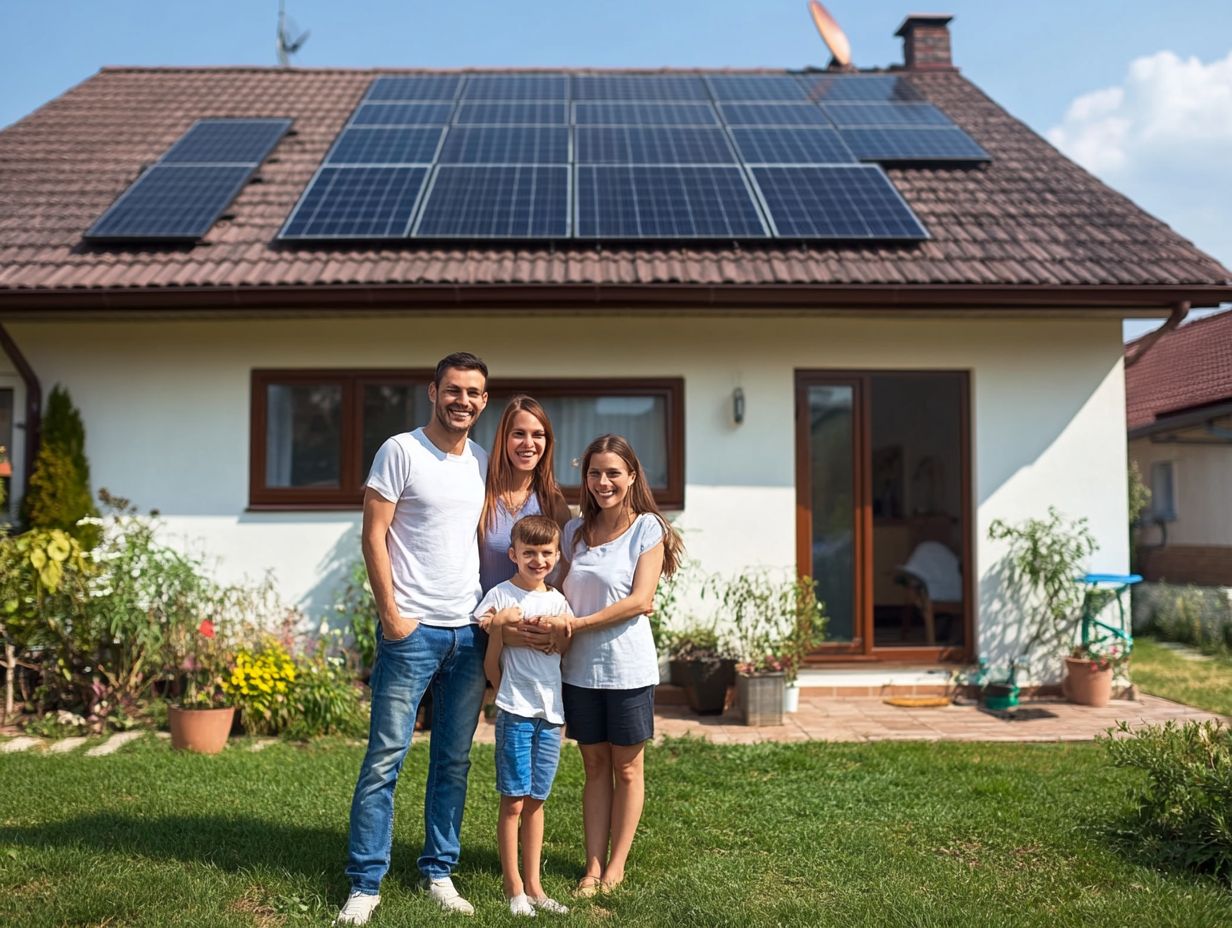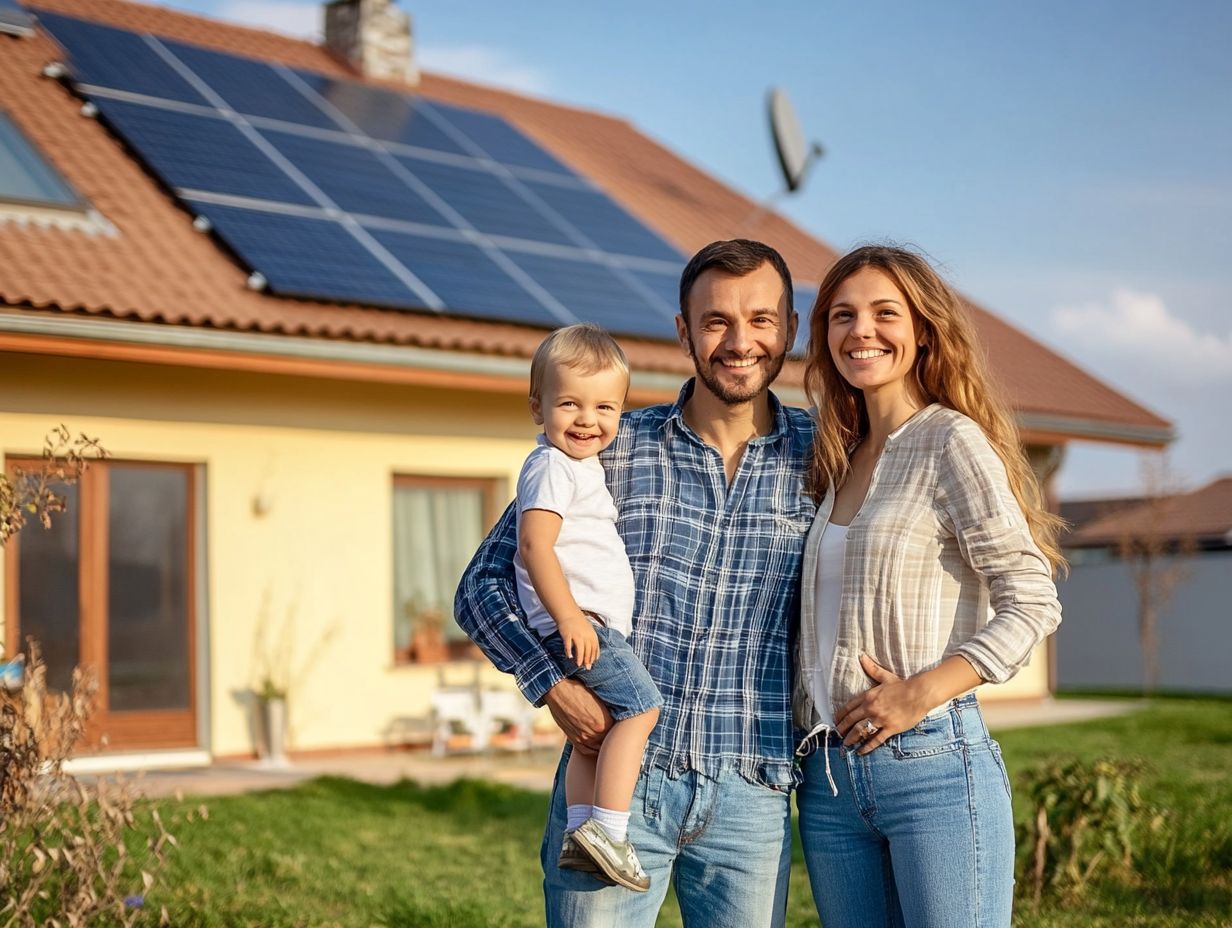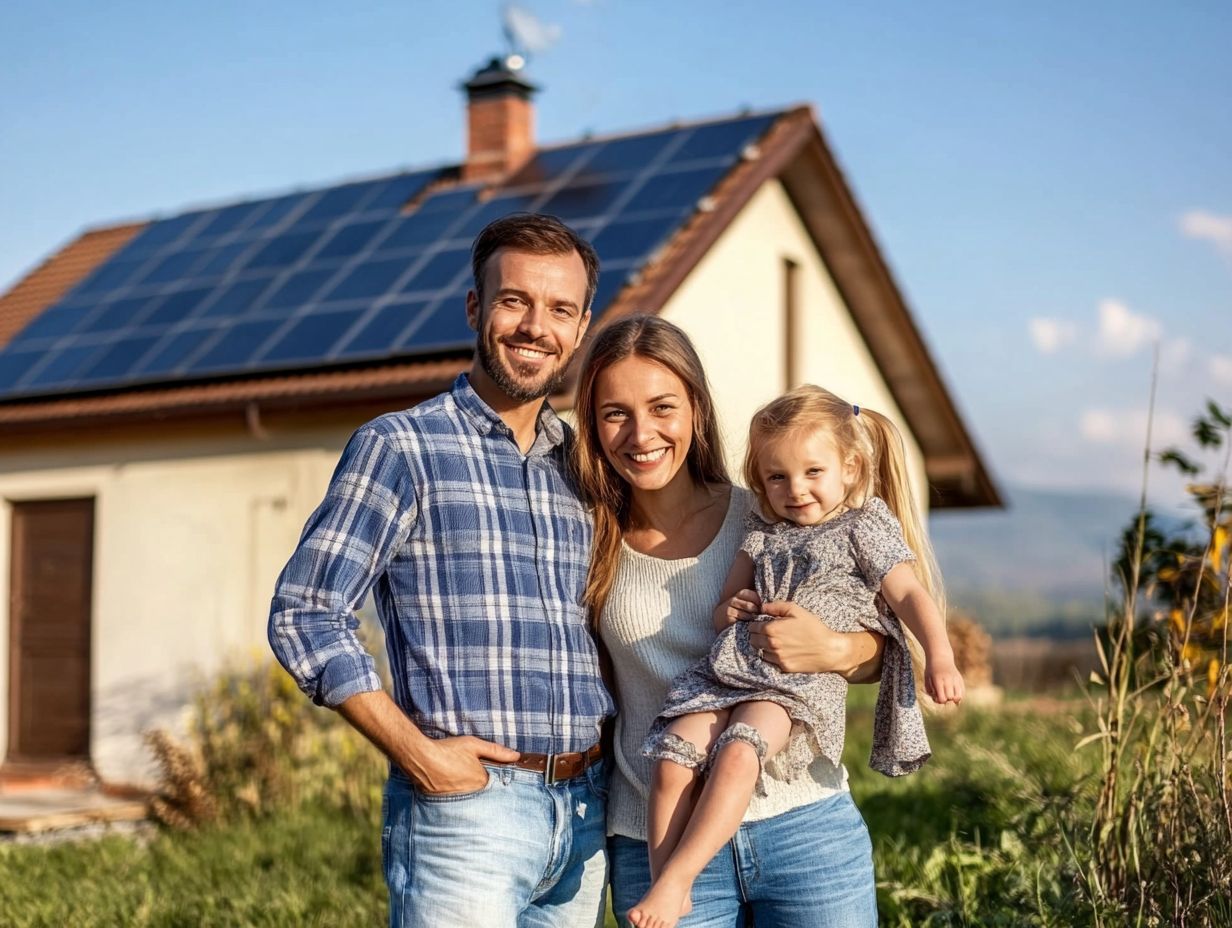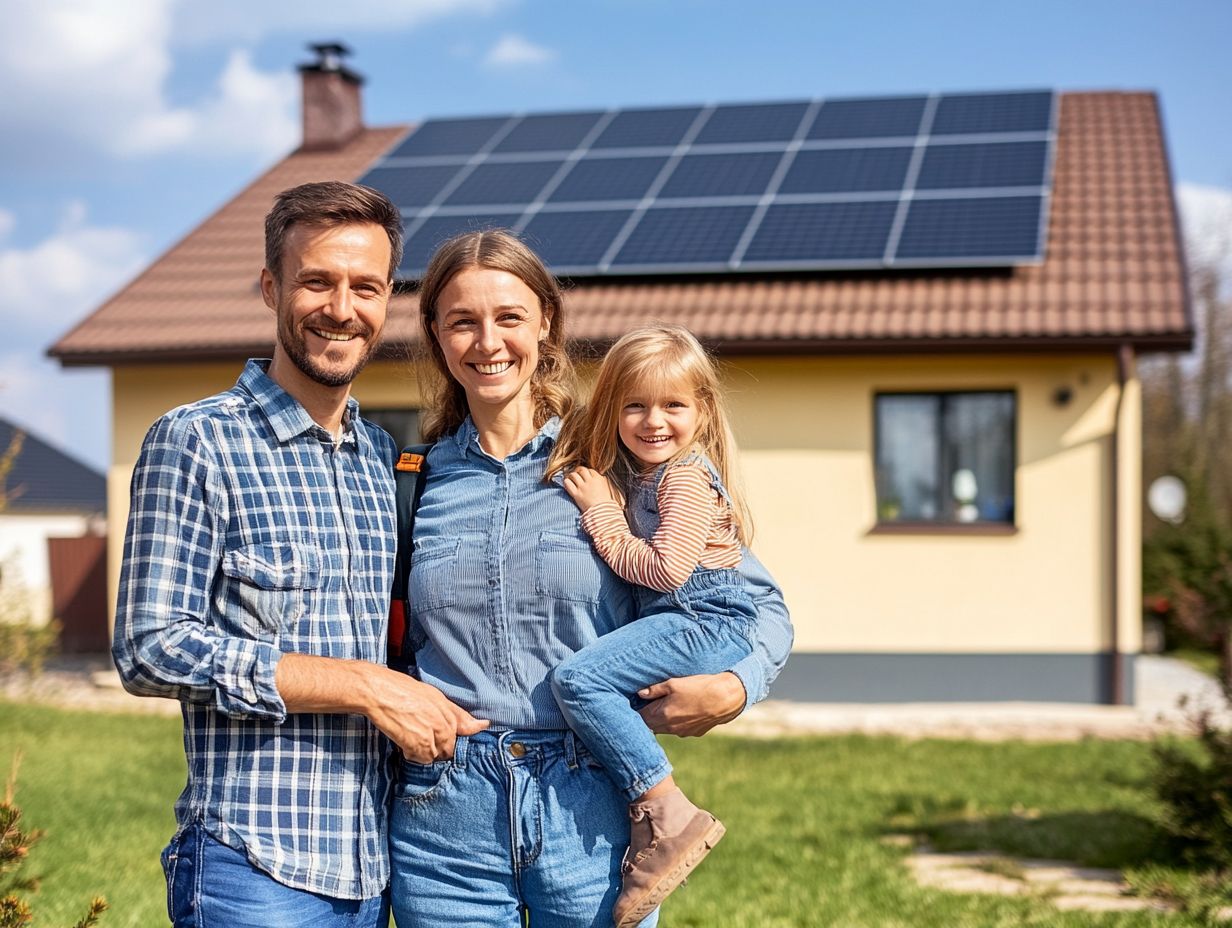Contents
- 1 Understanding Solar Panels
- 2 Understanding the Costs of Solar Panel Installation
- 3 Savings from Solar Panels
- 4 Factors Affecting Savings
- 5 Is Solar Energy Worth It?
- 6 Frequently Asked Questions
- 6.1 What Are the Potential Savings with Solar Panels?
- 6.2 Can Solar Panels Save Me Money on my Monthly Energy Bills?
- 6.3 Do I Need a Lot of Sunlight for Solar Panels to Save Me Money?
- 6.4 Are There Any Other Ways Solar Panels Can Save Me Money?
- 6.5 How Much Will I Need to Spend Upfront for Solar Panels?
- 6.6 Is it Worth Investing in Solar Panels?
Solar panels have become a popular solution for you as a homeowner looking to cut down on energy bills and embrace sustainable living.
Solar panels are a key component of sustainable energy solutions. This article explores the fundamentals of solar panels, including how photovoltaic systems function, installation and maintenance costs, potential long-term savings, and available financial incentives.
It also highlights potential savings, like those reduced energy bills and any available incentives you might be able to take advantage of.
You’ll find a look at the various factors that influence your overall savings, helping you figure out if investing in solar energy makes sense for your situation.
Understanding Solar Panels

Understanding solar panels is a must if you’re thinking about making the leap to renewable energy. These nifty devices capture sunlight and turn it into electricity, contributing to energy independence and providing some nice financial perks like savings on energy bills, along with significant environmental benefits.
By minimizing your carbon footprint, you not only save on electricity bills but also contribute to CO2 emission reduction. With the right solar power systems, you can boost your home’s value, enjoy solar power benefits, and even work towards achieving energy independence from the grid.
This knowledge will help you make smart choices about your energy use, installation costs, and overall energy management.
Definition and Function of Solar Panels
Solar panels are pretty amazing devices that turn sunlight into electricity, thanks to those nifty photovoltaic cells. They’re essential for residential solar power systems and also pop up in large utility-scale solar farms, helping to enhance energy efficiency and promote clean energy. By capturing solar radiation, these panels give you access to clean energy, which can really cut down your reliance on traditional electricity sources.
What’s truly fascinating about photovoltaic cells is how they work. Made from semiconductor materials, usually silicon, they absorb photons from sunlight. When these photons hit the semiconductor, they get the electrons all excited, creating electron-hole pairs that generate an electric current.
You can then use this current for all sorts of things, from powering your home to charging your electric vehicle.
The advantages of adopting solar energy extend beyond environmental benefits, offering significant economic advantages such as reduced energy bills and potential tax incentives. So, investing in solar panels could be a really smart move for your home or business.
How do Solar Panels Work?
Solar panels capture sunlight and turn it into electricity through something called the photovoltaic effect. When sunlight hits the solar cells in the panels, it gets those electrons all excited, generating an electric current you can use to power your home or even send back to the grid through net metering.
This cool technology not only helps you save on energy costs but also promotes clean, renewable energy.
As those excited electrons zoom around in the solar cells, they create a direct current (DC) flow. But since most of your home appliances and the electrical grid run on alternating current (AC), that’s where inverters come in, converting the direct current (DC) from your solar panels efficiently.
Inverters take the DC electricity from the solar panels and convert it into AC, making it ready for everyday use. This smooth conversion helps you rely less on traditional power sources, leading to energy savings and a smaller carbon footprint.
By tapping into the sun’s power, you can enjoy greater energy independence and a more sustainable lifestyle.
Green, M. A., Dunlop, E. D., Hohl-Ebinger, J., Yoshita, M., Kopidakis, N., & Hao, X. (2020). Solar cell efficiency tables (version 56). Progress in Photovoltaics: Research and Applications, 28(7), 629-638. Link
Understanding the Costs of Solar Panel Installation
If you’re considering solar panels for your home, it’s crucial to understand the costs related to installation and maintenance, which will help you make an informed financial decision.
The initial installation costs can vary depending on the type of solar system you choose, whether that’s a grid-tied system or an off-grid one, and the utility rates in your area. Plus, don’t forget to consider ongoing maintenance costs, which are typically lower than conventional systems, as you calculate your long-term savings and net savings.
Fortunately, with various financing options such as solar loans and government incentives like tax credits and government rebates, you can significantly lower those costs and boost your return on investment. Overall, these financing options can make solar energy an economically viable solution for many homeowners.
Initial Investment
The initial investment in solar panels includes not just the installation costs but also any financing options that can make this renewable energy choice more accessible for you.
It’s important to evaluate the price per watt of different solar energy systems so you can grasp your financial commitment, understand the solar energy cost, and the potential savings you could see over time.
Installation costs can vary quite a bit based on factors like the system size, the type of solar panel technology you choose, and local labor rates, which can really differ from one region to another.
For example, while larger systems might offer some economies of scale, they can also require a higher upfront payment.
You have a range of financing options at your disposal, including solar loans, solar leases, and power purchase agreements, all tailored to fit different financial situations and optimize your solar financing strategy.
Using tools like energy savings calculators can be super helpful in projecting your long-term return on investment and energy return on investment, enabling you to make informed decisions on your solar energy journey.
Maintenance and Upkeep

Keeping your solar panels in tip-top shape is key to making sure they perform well and last a long time. The good news is that maintenance costs are usually lower than those for other energy systems, contributing to the overall cost-effectiveness and sustainability of solar energy adoption. Regular inspections can really help you maximize energy efficiency, enhance solar system efficiency, and stretch the lifespan of your solar energy setup.
Don’t forget about routine maintenance tasks, like periodic cleaning to get rid of dust, debris, and those pesky bird droppings. Even small blockages can mess with your panels’ performance and affect electricity generation efficiency.
Along with cleaning, it’s a smart move to schedule professional inspections to check the integrity of wiring, connections, and the overall functionality of your system, ensuring the reliability of your photovoltaic systems.
Keep in mind that while solar panels can last anywhere from 25 to 30 years, factors like extreme weather, shade from nearby trees, and shoddy installation can affect their long-term efficiency. By staying proactive about maintenance, you can help ensure your solar system maintains optimal energy performance and keeps operating at its best for years to come.
Savings from Solar Panels
One of the best reasons for you to invest in solar panels is the opportunity to significantly reduce your energy expenses on your energy bills. By tapping into solar energy, you can cut down on your reliance on grid electricity, enhance energy conservation, and enjoy long-term savings.
Plus, with programs like net metering, you can earn credits for any surplus energy your solar system produces. It’s a win-win!
Reduced Energy Bills
Switching to solar energy can really help you cut down on your energy bills since generating your own electricity means you’re less reliant on those pesky, fluctuating utility rates. By optimizing your energy use with solar panels, you may experience significant savings each month while also doing your part for a more sustainable energy future and contributing to carbon footprint reduction.
Many homeowners like you report saving anywhere from 20% to 50% on their monthly energy expenses after installing solar systems. For example, a typical household might save around $100 to $200 each month, depending on their energy production, energy consumption patterns, and the local utility rates.
Over the course of a year, that adds up to thousands of dollars you could redirect toward other financial goals. Plus, with incentives like tax credits and rebates, the initial investment in solar becomes even more attractive, boosting your average household savings and encouraging a shift toward renewable energy sources.
Incentives and Tax Credits
There are numerous government incentives and tax credits that make investing in solar panels an even more attractive option for you as a homeowner. By participating in solar incentive programs, you can snag some significant financial rebates and credits that help lower the overall cost of your solar energy system, improving the financial viability of your solar energy investment.
These incentives come in various forms, like federal tax credits such as the Investment Tax Credit (ITC), which significantly enhances the financial analysis and payback period for solar energy investment. This allows you to deduct a significant percentage of your installation costs directly from your federal taxes. Plus, many states offer their own rebates, grants, and tax credits, which can vary quite a bit. It is crucial to stay informed about local programs and their eligibility requirements to maximize your savings.
By figuring out how to navigate these options, you could see some serious reductions in your upfront costs while also contributing to a more sustainable energy future.
Factors Affecting Savings
There are several factors that can influence the savings you get from solar panels, starting with where you live and the climate. These elements really affect how efficiently your solar panels perform and how much energy they can produce.
Understanding your home’s energy consumption patterns, solar energy statistics, and local utility rates is also crucial for getting a clear picture of your potential savings.
Location and Climate

The location and climate of your home are key players in determining how well your solar panels perform and how much energy they can produce. If you reside in a region that receives abundant sunshine, you are likely to see higher energy output. But if you live in an area that’s often shrouded in clouds, you might not get the same bang for your buck.
Take places like Arizona and California, for example; they soak up sun like it’s going out of style, making them perfect for solar energy systems. On the flip side, if you’re in the rainy Pacific Northwest, you may find it a bit trickier to reach those efficiency levels.
That’s when you might want to look into different solar technologies, like advanced photovoltaic energy systems, that work better in less sunny environments.
Knowing how much solar potential your location has can really shape your decision to install solar panels. You’ll likely weigh the potential energy savings, available solar incentives, and the long-term environmental perks against the specifics of your local climate, such as average household savings and energy production capabilities.
Size and Efficiency of Panels
The size and efficiency of your solar panels, including photovoltaic systems, play a big role in how much energy you can produce and what it’ll cost you overall. Sure, higher efficiency panels might hit your wallet a bit harder upfront, but they can save you a lot more in the long run by generating more electricity, contributing to sustainable energy, in the same amount of space.
Take, for example, a homeowner like you who’s weighing the options between standard and high-efficiency panels. Standard panels might seem like a steal when it comes to purchase and installation costs, but they usually need more square footage to churn out the same energy as their high-efficiency friends.
If your roof space is on the limited side, those more efficient solar panel types can really ramp up your energy output, leading to lower electricity costs and electricity bills over time, enhancing your solar power benefits.
When you do a side-by-side cost comparison, you might find that investing in premium solar panels could give you a faster return on investment, considering the financial analysis and energy return on investment, making them a smart choice if you want to harness solar energy without needing a ton of space.
Is Solar Energy Worth It?
Determining whether solar energy is a worthwhile investment involves considering several key factors, like your expected return on investment, energy independence goals, and the long-term financial perks, such as net savings and a potential home value increase.
By understanding the payback period for your solar power system, including potential solar loan implications, you can get a sense of how quickly you’ll start reaping the benefits from those reduced energy costs and kilowatt-hour savings.
Calculating Return on Investment
Calculating the return on investment for your solar panels means weighing the initial costs against the long-term financial perks, like energy savings, solar incentives, and any government rebates. Using an energy savings calculator can really clarify your expected payback period, helping you make smart choices about your investment.
These tools consider different factors such as your location, energy consumption, and the details of the solar system you’re looking at, including photovoltaic energy options. By entering relevant information, you can estimate how much you might save on your utility bills over time, which plays a big role in your overall financial assessment and solar financing decisions.
- Location
- Energy consumption
- Details of the solar system
- Photovoltaic energy options
Local rebates and federal tax credits can drastically lower your upfront costs, boosting your return on investment and speeding up that payback period. It’s crucial to keep yourself updated on available incentives because they can often make the difference in deciding whether solar energy is a financially wise move for you, particularly in terms of solar energy cost and financial forecasting.
Key Considerations Before Installing Solar Panels
Before you dive into installing solar panels, it’s a good idea to think about a few key factors, like your financing options, such as a solar lease, long-term maintenance costs, and what you hope to achieve with energy independence. Taking the time to evaluate these elements will help you pick the right solar energy system that matches your financial goals and sustainability aspirations.
You should also assess your current energy consumption and what you might need in the future, possibly through an energy audit. This assessment is crucial for figuring out the size and type of system that will work best for your household, considering solar system efficiency and energy conservation strategies.
Don’t forget to look into the available incentives, government rebates, and financing plans, including solar financing options. These can really influence your overall investment and aid in consumption reduction. While maintenance is usually minimal, it’s still important to consider, since regular check-ups will keep your system running smoothly and efficiently. Recommended maintenance practices include cleaning the panels periodically and checking for shading or obstructions.
In the end, doing a thorough cost-benefit analysis, possibly using solar energy statistics and solar cost analysis, will enable you to make informed decisions about investing in solar panels that align with your energy goals and fit nicely within your budget, enhancing your residential energy use.
Frequently Asked Questions

What Are the Potential Savings with Solar Panels?
The amount of money you can save with solar panels depends on a variety of factors, including your location, energy usage, utility rates, and the cost of electricity. On average, homeowners can save between $10,000 to $30,000 over the lifetime of their solar panels, contributing to significant long-term savings.
Can Solar Panels Save Me Money on my Monthly Energy Bills?
Yes, solar panels can significantly reduce your monthly energy bills. By generating your own electricity through clean energy solutions, you can decrease your reliance on traditional power companies, achieve grid independence, and potentially eliminate your energy bills altogether.
Do I Need a Lot of Sunlight for Solar Panels to Save Me Money?
Contrary to popular belief, you don’t need constant sunny weather for solar panels to save you money. Solar panels, including advancements in solar technology, can still generate electricity on cloudy days and even during winter months, making them a viable energy option for all regions and contributing to solar energy adoption.
Are There Any Other Ways Solar Panels Can Save Me Money?
Along with reducing your energy bills, solar panels can also increase the value of your home, provide tax credits and incentives, and potentially earn you money through net metering programs, contributing to solar power generation. They are also a long-term investment, saving you money on electricity costs for years to come, while enhancing home improvement and solar technology advancements.
How Much Will I Need to Spend Upfront for Solar Panels?
The upfront cost of solar panels can vary depending on the size and type of system you choose. However, with financing options and tax credits, as well as state incentives, the initial investment can be significantly reduced. Additionally, the long-term savings from solar panels can outweigh the initial cost, contributing to net savings and energy storage benefits. On average, you might expect to spend between $15,000 to $25,000 for a residential solar system.
Is it Worth Investing in Solar Panels?
Absolutely. Investing in solar panels not only saves you money, but it also benefits the environment by reducing your carbon footprint and contributing to climate change mitigation. With advancements in solar technology, solar panels are more affordable and efficient than ever before, making now the perfect time to make the switch to renewable energy and embrace solar grid connection.

